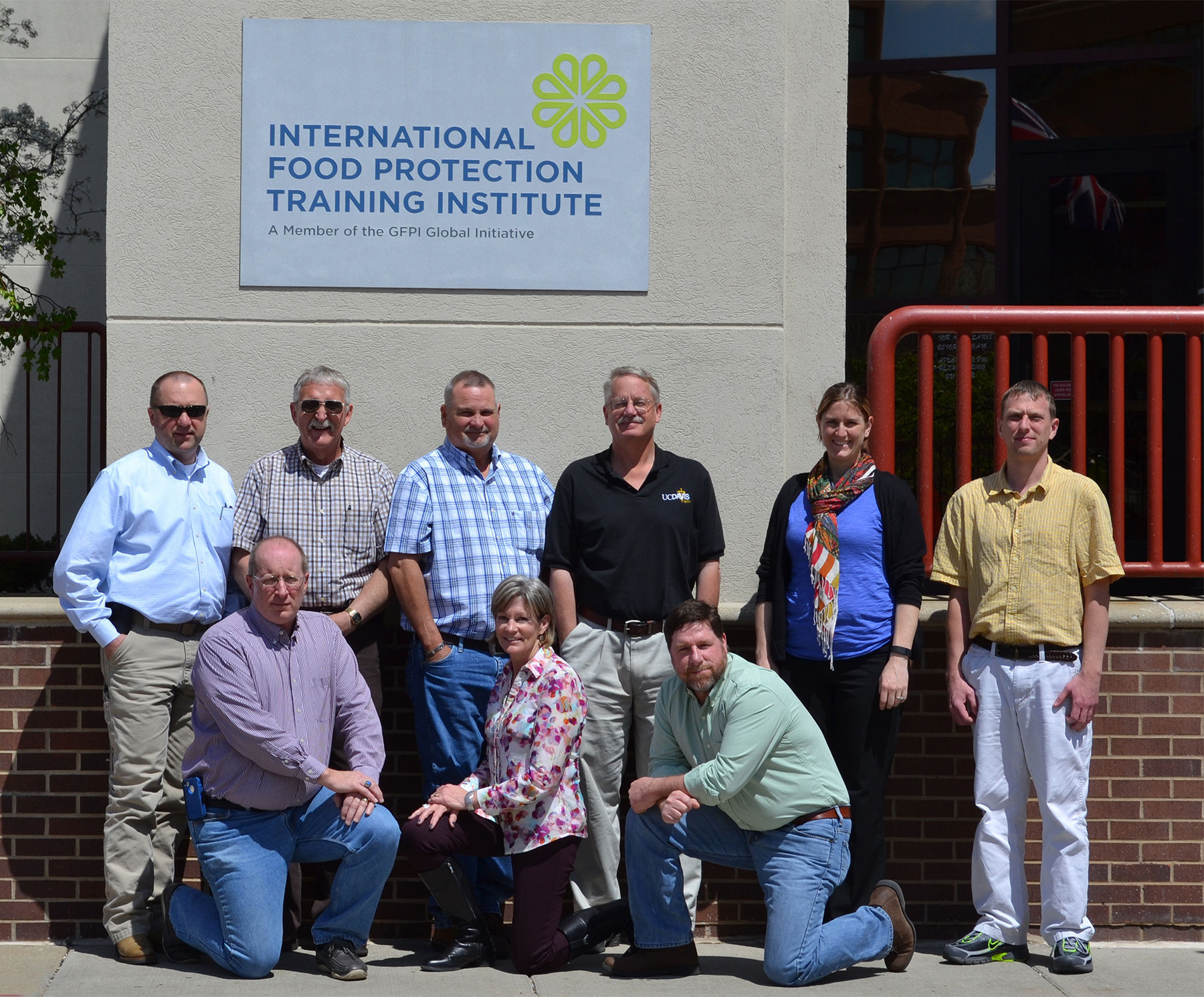Protecting Animal Feed Protects Our Food
Chris Brunner, May 14, 2015

Pictured left to right: Shannon Jordre – FDA Center for Veterinary Medicine, Jim True – University of Kentucky, Edward Huffman – Virginia Department of Agriculture, Devin Hart – Missouri Department of Agriculture, Catherine Marrier – Washington State Department of Agriculture, Michael Payne – Western Institute for Food Safety and Security UCD, Tim Lyons – Michigan Department of Agriculture, Elizabeth Rigoni – FDA Health and Human Services, and Dave Dressler Pennsylvania Department of Agriculture.
Although not typically on the minds of the public, regulation and inspection of animal feeds affects them every day, from keeping their pet foods safe to preventing BSE (“Mad Cow Disease”) from entering the United States. Feed inspection is also important to farmers and ranchers by safeguarding livestock feed thus ensuring that the meat, milk and eggs produced are safe for humans as well.
Animal feed production in the U.S. is an enormous enterprise with vast amounts of feed fed to a wide variety of livestock, poultry and fish species. Feeds are diverse, ranging from simple hay and corn to nutritious by-products like almond hulls, cotton seeds and bakery waste.
In 2009 the U.S. Food and Drug Administration (FDA) began an initiative to help streamline implementation of the complex network of state and federal feed laws and regulations. Called the Animal Feed Regulatory Program Standards (AFRPS), the project goal is to integrate feed regulation components ranging from inspection and enforcement to sampling and laboratory services. The FDA is joined in this effort by the Association of American Feed Control Officials (AAFCO), a professional organization of feed control experts from the 50 states and Canada that has promoted feed safety since 1909.
An important component of AFRPS is development of a competency-based curriculum framework for feed control officials. Ultimately this framework will be available to direct development of on-line and in-person courses to augment existing state and federal training programs.
The project is being led by the International Food Protection Training Institute (IFPTI), a public-private partnership with considerable expertise in developing competency-based training and certification programs. IFPTI is using an Expert Workgroup representing state animal feed control agencies, FDA’s Division of Human Resource Development (DHRD) and Center for Veterinary Medicine (CVM), the AAFCO, the National Environmental Health Association (NEHA), and the Western Institute of Food Safety and Security (WIFSS), at UC Davis.
The Expert Workgroup convened April 27 – May 1, 2015, at the IFPTI headquarters in Battle Creek, Michigan, and drafted a multi-tiered curriculum framework, along with competencies for approximately 30 content areas related to animal feed control, such as Animal Nutrition, Biosecurity, Labeling, and Sampling. The framework and competencies will soon be vetted by a larger audience of feed control officials, and will likely be presented at the upcoming Joint Annual Meeting with AAFCO and AAPFCO in August.
